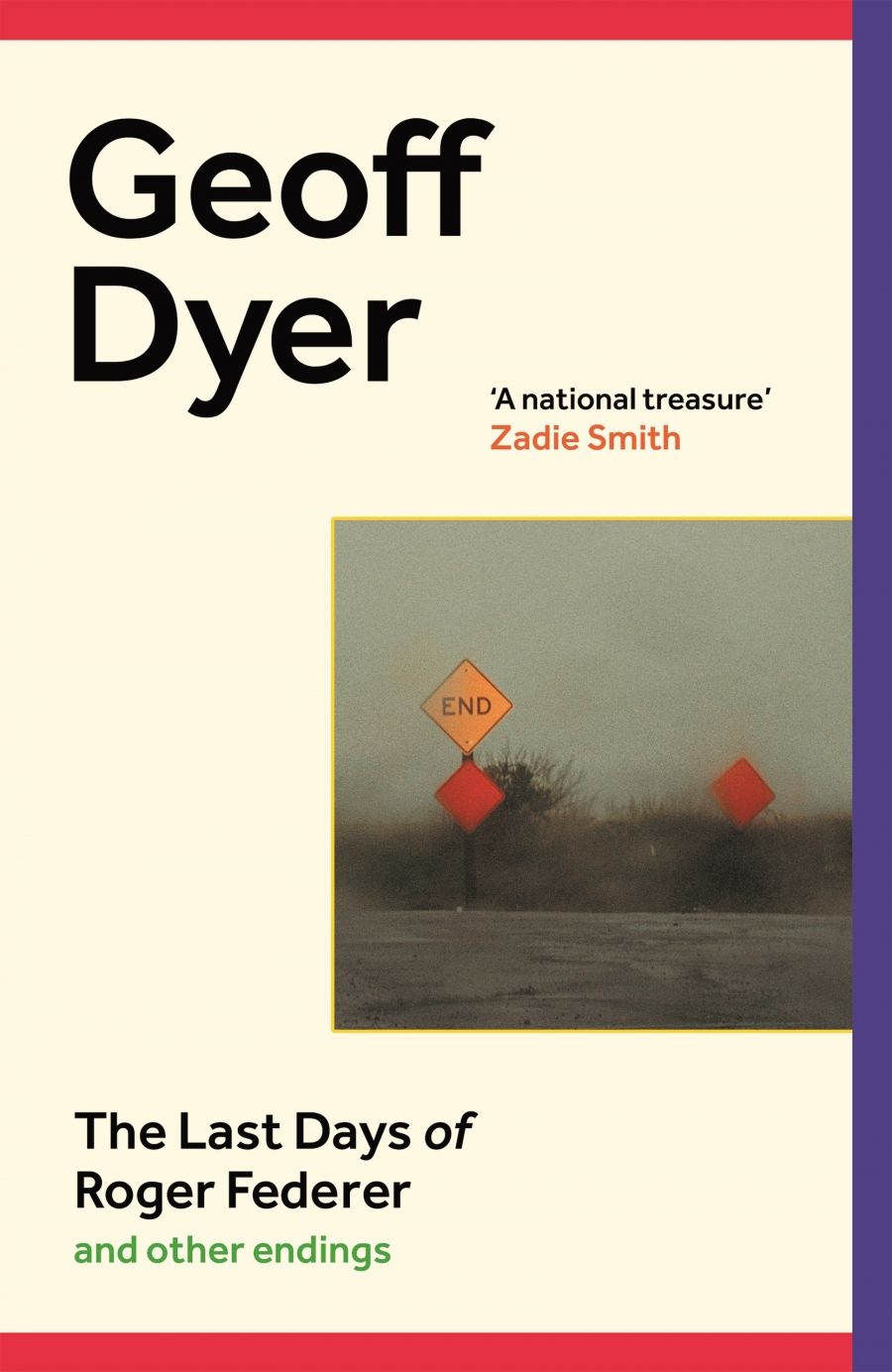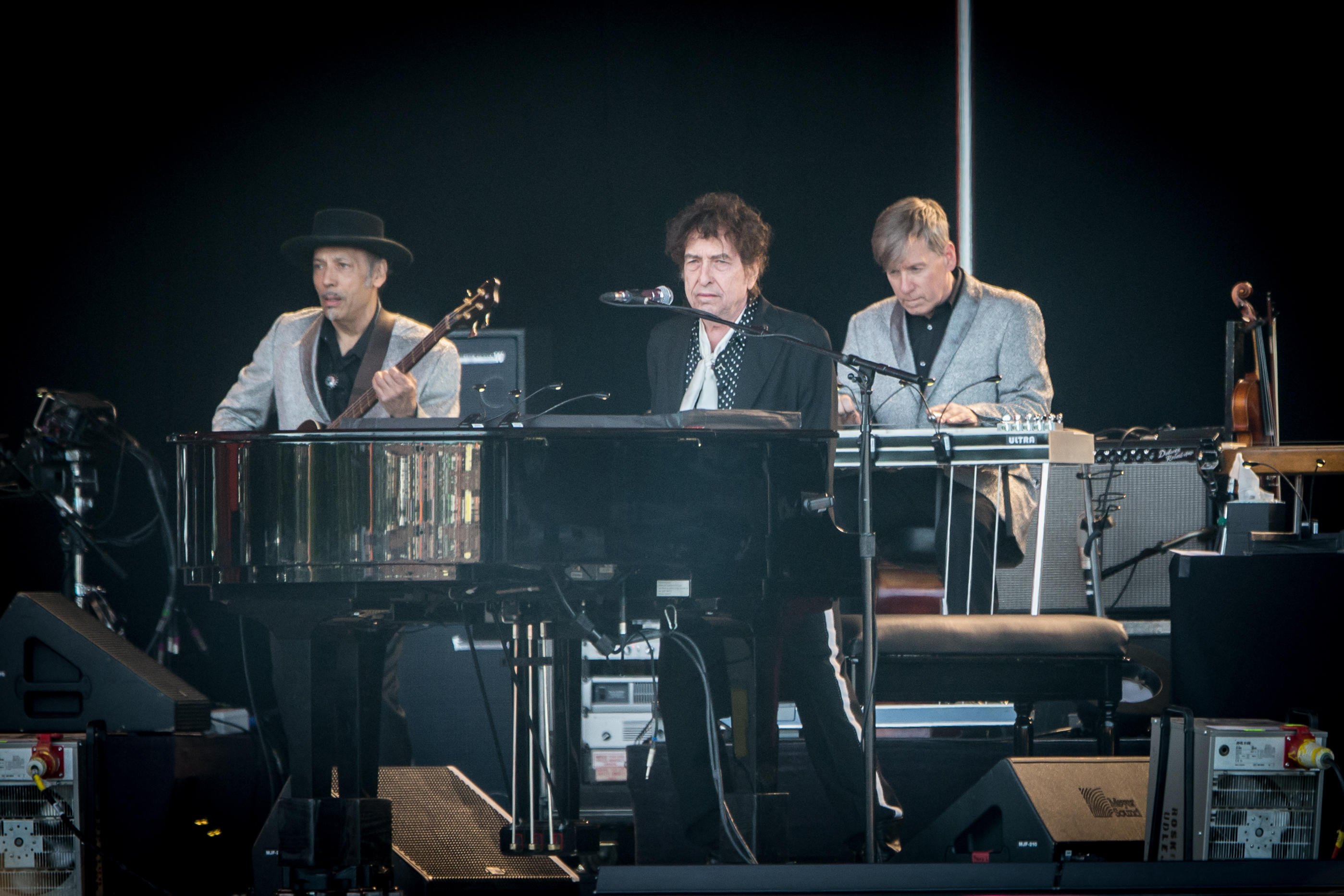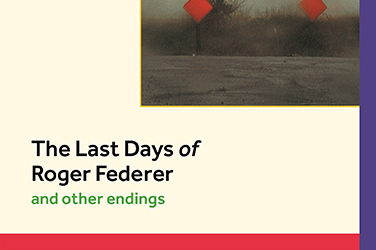
- Free Article: No
- Contents Category: Memoir
- Review Article: Yes
- Article Title: Time's wing'd chariot
- Article Subtitle: Holding personal extinction at bay
- Online Only: No
- Custom Highlight Text:
As chance would have it, this review was written following the retirement, aged forty-one, of Roger Federer from top-tier competitive tennis. Federer’s decision might be regarded as tricky for Geoff Dyer, since his latest work of essayistic autofiction leans heavily on the notion that while Federer, one of the giants of the sport, is forever about to retire, he never actually does.
- Article Hero Image (920px wide):

- Article Hero Image Caption: Bob Dylan performs in Denmark, 2019 (Gonzales Photo/Alamy)
- Featured Image (400px * 250px):

- Alt Tag (Featured Image): Geordie Williamson reviews 'The Last Days of Roger Federer: And other endings' by Geoff Dyer
- Book 1 Title: The Last Days of Roger Federer
- Book 1 Subtitle: And other endings
- Book 1 Biblio: Canongate, $39 pb, 287 pp
- Book 1 Readings Link: https://www.booktopia.com.au/the-last-days-of-roger-federer-geoff-dyer/book/9781838855741.html
The song – the poem or novel or painting or photograph – is a kind of hedge against a definitive ending. Artistic creation is the arrow in Zeno’s paradox that never reaches its target. Here Bob Dylan, the serial reworker of his own back catalogue, the ever-restless tourer and recording artist, comes to be seen in new and infuriating clarity:
The relentless grind of touring has taken its toll on Dylan’s voice… though witnesses report that on odd nights it’s been magically restored. The rest of the time the voice David Bowie had famously described as sounding like ‘sand and glue’ has seemed, for a decade or more, to emanate from glands permanently afflicted by an incurable yet oddly sustaining strain of flu.
While Dyer remains an unswayable fan of Dylan, linking the decline of the singer’s voice to his rise as an almost mythic figure, he acknowledges the flipside to adulation based on staying power alone. The ‘terminal phase’ of Dylan’s career, he observes, ‘can easily become interminable’: ‘It beggars belief that anyone could prefer a recent version of an old song or indeed a new song over an old one. When I listen to a new Dylan album, my reaction is to quote back his response to the Albert Hall Heckler in 1966: “I don’t believe you.”’
Then there is the case of Dylan’s older Beat contemporary, Jack Kerouac, whose ‘hard-won struggle to master “spontaneous prose” both enabled Kerouac to write his great book [On the Road] and condemned him, for the rest of his creative life, to banging out pretty terrible ones’. As early as 1961, Dyer writes, Kerouac was ‘conscious of the paradoxical and hidden costs of his style of composition’:
What happened was, as soon as I had made a formal discovery of spontaneous prose, it wasn’t spontaneous anymore!’ ‘In fact,’ he went on, ‘I think I’ve forgotten how to write by now.’ As the liberating idea of ‘wild spontaneous yowks’ hardened into an inflexible method, Kerouac became a prisoner of the ‘fuckyou freedom’” he had helped unleash.
Here, once again, initial creative success threatens to trap the artist in a cul-de-sac. But where Dylan accepts the risk of alienating his listeners with determinedly awkward reworkings of old classics in live performance, Kerouac mined, over and over, the same thin seam.
One might think that Dyer finds only unsatisfactory answers to the question of how an artist might sustain their practice over time. For Beethoven, increasingly deaf, it is an increasing complexity of composition that leaves his contemporary audiences baffled. Meanwhile, Sanders, gifted saxophonist and erstwhile bandmate to John Coltrane – who himself has died since the publication of The Last Days of Roger Federer – blows the same wild ‘sheets of sound’ with ever decreasing vigour.
It is on the accumulation of examples that an alternative position is built – one that acknowledges inevitable creative
decline while honouring the effortful grind of artists as a cohort. The possibility of surprise, for example, such as Federer’s late annus mirabilis in 2017, or those occasional concerts when Dylan’s voice regains its early power, keeps us watching or listening through many a creative or sporting doldrum.
But it is also the case that a long career, viewed as a whole, can possess a nobility that is more than the sum of its aesthetic parts. Lawrence, whose life and work Dyer indelibly and idiosyncratically rendered in his anti-biography Out of Sheer Rage (1997), emerges in these pages as the patron saint of last things. ‘Lawrence recorded and wrote about everything he saw and smelled and touched, with delicacy and deliberate abandon,’ writes Dyer. When advancing tuberculosis robbed him of the energy to write novels, a ‘cascade of shorter writings would continue: poems, essays, letters …’ When the restless travel which sustained Lawrence was no longer possible, he made a final retreat to New Mexico. For the last two years of his life, Lawrence’s friend Aldous Huxley wrote, he was ‘like a flame burning on in miraculous disregard of the fact that there was no more fuel to justify its existence’.
Having prepared this biographical ground, and acknowledged the shrinkage and exhaustion that attended Lawrence’s final days, Dyer quotes from his poem ‘The Ship of Death’:
And everything is gone the body is gone
completely under, gone, entirely gone.
The upper darkness is heavy on the lower,
between them the little ship
is gone
she is gone
It is the end, it is oblivion.
Having allowed the reader to absorb this stanza, its air of stark finality, Dyer furnishes the next:
And yet out of eternity a thread
separates itself on the blackness,
a horizontal thread that fumes a little with pallor on the dark.
Is it illusion? or does the pallor
fume a little higher?
Ah wait, wait, for there’s the dawn,
the cruel dawn of coming back to life
out of oblivion.
It is a conclusion that recalls Wittgenstein’s suggestion that ‘Death is not an event in life: we do not live to experience death’: ‘If we take eternity to mean not infinite temporal duration but timelessness, then eternal life belongs to those who live in the present. Our life has no end in the way in which our visual field has no limits.’
The Last Days of Roger Federer, like Dyer’s body of work, teases the distinction between sincerity and facetiousness, ironic reserve and sincere admiration. Its arguments are powered by a cool critical certitude and capacious intellectual reach, while continually presenting its narrative progress as inspired by nothing more than casual amateurism and sloth.
By his book’s continual tacking between artist and author, and between artwork and author-as-critic, Dyer asks that we take seriously the idea that the book is a document designed to hold personal extinction at bay. The author may have nothing more terrible to report than ongoing tennis-related neck-and-knee-related injuries, but the implications of his argument are no less cogent for being comically downplayed.
It may be, as Dyer suggests, that ‘our deepest desire is for it all to be over’. Yet his ever-expanding oeuvre serves as a rolling disclaimer. Every work is a comeback, made against increasingly terrible odds.
During an onstage discussion with John Berger, Dyer recalls, he asked his hero and mentor about his creative longevity: ‘how he’d managed to write so many books, over such a long period of time’. ‘It was, he said (after a pause so extended it felt like the conversation might have come to an end), because he believed every book would be his last.’


Comments powered by CComment